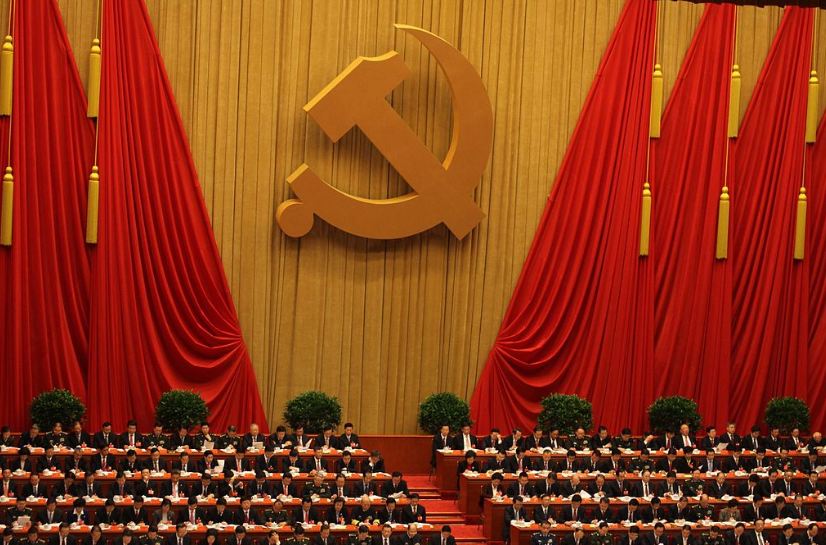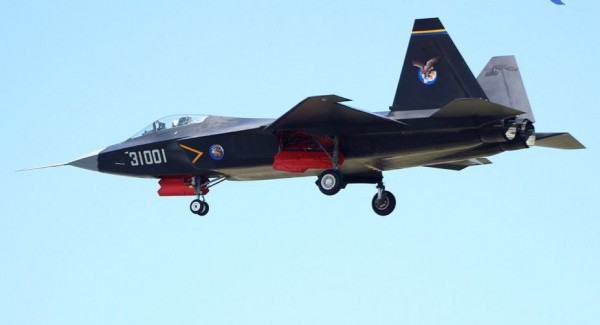Russian Experts Claim China’s PLAAF can Catch-up with Russia and the US
| Arthur Dominic Villasanta | | Sep 08, 2016 09:07 PM EDT |
(Photo : CCTV) Shenyang FC-31 stealth fighter.
Russian aviation experts contend combat aircraft of China's People's Liberation Army Air Force (PLAAF) are "quite competitive" compared to those of the United States except in strategic aviation.
They also expect China to rectify the PLAAF's most serious problem -- the inability of Chinese industry to manufacture high performance jet engines at par with those in the U.S. and Russia -- with the establishment this August of state-owned Aero Engine Corporation of China (AECC).
Like Us on Facebook
AECC is capitalized at $7.5 billion and is being funded by China's State Council and the Beijing government. Chinese state-run media said the new firm already has 96,000 employees.
AECC's most immediate aim is to perfect the art of making fighter jet engines powerful enough to allow China's stealth fighters to live up to their promise. Analysts have long said inferior engines are holding back the development of the underpowered Shenyang J-31 and the Chengdu J-20 fifth generation stealth fighters.
The most sophisticated engines powering fourth generation fighters of the PLAAF and its most modern transport aircraft are made in Russia.
Chinese President Xi Jinping said establishing AECC was a "strategic move" to make China an aviation power and modernize the military.
Alexander Khramchikhin, deputy director of Russia's Institute of Political and Military Analysis, and Andrei Frolov, editor of Arms Export magazine, were united in their opinion China's combat aircraft will one day match the best of those in the U.S. and Russia.
"China's Air Force, like that of Russia, remains behind the US when it comes to support aircraft (including tankers, transport planes, and electronic warfare planes), but is steadily closing the gap," said Khramchikhin.
But in numbers of fourth generation fighters, "China will confidently come out first in the world, besting both the US and Russia -- and its airplanes will be physically newer."
China, however, is at a disadvantage in strike fighters or attack aircraft whose mission is to attack ground or naval targets.
Khramchikhin argued the situation as regards strike aircraft "is rapidly improving. So in terms of combat aircraft the Chinese are quite competitive, with the exception of strategic aviation."
Frolov was also impressed by the potential of Chinese air power, but noted limitations in China's engine-building capabilities have degraded China's military aviation. He said this problem needs to be solved before China can really compete with the U.S.
The problem with engines is all the more acute with China's fighters. Frolov said the WS10A Taihang engine, produced and developed in Shenyang is installed on Chinese derivatives of the Su-27 twin-engine heavy fighter, the J-11B/BS and the J-16.
"But this engine, on the one hand, faces reliability issues, and on the other, is not powerful enough for a fifth-generation fighter. Therefore, China faces a new challenge -- to make a more powerful engine on the level of our Product 117 (the AL-41F1), installed on the Su-35 fighter jet."
"As far as combat aircraft are concerned, the Chinese have the J-10A, a good fighter using the Russian-made AL-31FN engines, and the J-10B, equipped with an active phased array antenna. That's something none of our production aircraft have yet."
Frolov said competition with the US is more difficult, because the Americans have both quantity and quality on their side.
TagsPeople's Liberation Army Air Force, PLAAF, Aero Engine Corporation of China, President Xi Jinping, Shenyang J-31, Chengdu J-20
©2015 Chinatopix All rights reserved. Do not reproduce without permission
 Xi set to Seize Control of the Communist Party's Politburo Standing Committee
Xi set to Seize Control of the Communist Party's Politburo Standing Committee China’s Strategic Goals Make War with the US Almost Inevitable
China’s Strategic Goals Make War with the US Almost Inevitable China to Build World’s Largest Aircraft, Ukraine’s An-225, for Military Use
China to Build World’s Largest Aircraft, Ukraine’s An-225, for Military Use China Improves its Own Version of Russian Missile that Destroyed Flight 17 over Ukraine
China Improves its Own Version of Russian Missile that Destroyed Flight 17 over Ukraine
EDITOR'S PICKS
-

Did the Trump administration just announce plans for a trade war with ‘hostile’ China and Russia?
-

US Senate passes Taiwan travel bill slammed by China
-

As Yan Sihong’s family grieves, here are other Chinese students who went missing abroad. Some have never been found
-

Beijing blasts Western critics who ‘smear China’ with the term sharp power
-

China Envoy Seeks to Defuse Tensions With U.S. as a Trade War Brews
-

Singapore's Deputy PM Provides Bitcoin Vote of Confidence Amid China's Blanket Bans
-

China warns investors over risks in overseas virtual currency trading
-

Chinese government most trustworthy: survey
-

Kashima Antlers On Course For Back-To-Back Titles
MOST POPULAR
LATEST NEWS
Zhou Yongkang: China's Former Security Chief Sentenced to Life in Prison

China's former Chief of the Ministry of Public Security, Zhou Yongkang, has been given a life sentence after he was found guilty of abusing his office, bribery and deliberately ... Full Article
TRENDING STORY

China Pork Prices Expected to Stabilize As The Supplies Recover

Elephone P9000 Smartphone is now on Sale on Amazon India

There's a Big Chance Cliffhangers Won't Still Be Resolved When Grey's Anatomy Season 13 Returns

Supreme Court Ruled on Samsung vs Apple Dispute for Patent Infringement

Microsoft Surface Pro 5 Rumors and Release Date: What is the Latest?










